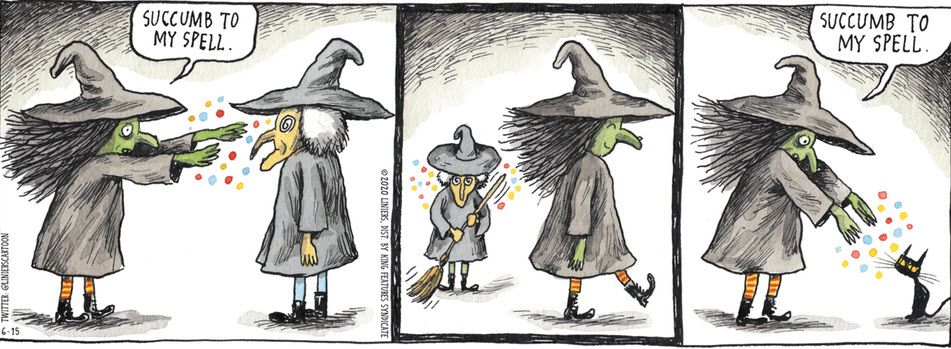Interpreting the iWAM
In the previous post, we indicated that The Institute held a session on "Interpreting the iWAM".
We touched on a few of the challenges in understanding the results and in dealing with potential objections.
Occasionally, we'll post something that provides some insights both into what the iWAM measures and the different ways of understanding what it means.
Initiation - Reflection & Patience
These are the first two scales in the iWAM report.
Initiation is an indication of the extent to which someone wants to make something happen; that is, to be proactive.
Reflection & Patience represents a couple of aspects of motivation. One is the extent to which someone is comfortable waiting (being patient). The other is the extent to which the individual wants to respond to something; that is, to be reactive.
Here are a couple of cartoons featuring cats as potential candidates for the iWAM.
The three frames in the first one (from Macanudo) reflect a witch who is highly proactive (trying to make things happen).

She is successful in her first attempt getting her sister witch to sweep the floor. The second attempt, however, turns out differently. The witch's proactive actions do not get the desired response.

If we only saw the second example, we might think that the witch lacks talent. When we refer to the first encounter; however, we find that the witch got the desired result.
This is a case in which the cat's motivation (lack of desire to respond or to being told what to do) trumps the witch's talent.
In the second cartoon (from Rhymes with Orange), the interpretation may be more challenging.

We can't tell the dog's goal or intention, so we'll focus on the cat's actions.
On one hand, we could argue that the cat is highly reactive (high on Reflection & Patience) and is responding (appropriately?) to the noisy hound's barking. On the other hand, one could argue that if the cat is high in Initiation. The cat is being proactive with the goal of taking action to achieve "peace".
Either is a possibility.
So What?
If we could just get the cats to take the iWAM, we'd have a clue to the correct interpretation.
But, as we know, cats are like teenagers--it's difficult, if not impossible, to get them to do anything we want them to do.
Maybe in the future we'll talk about Individual Motives and External Reference for insights into how to increase influence on the cats in your organization.